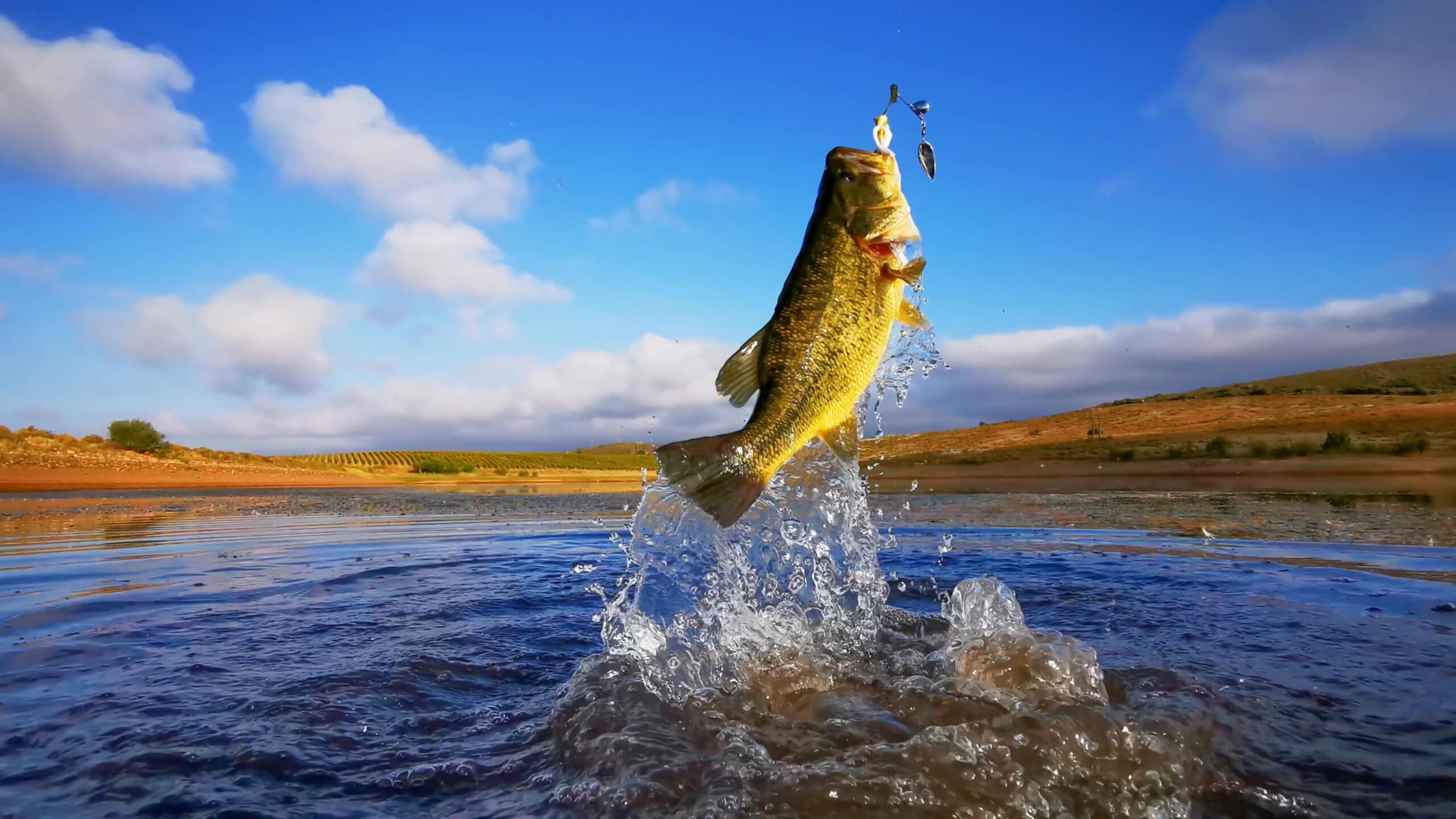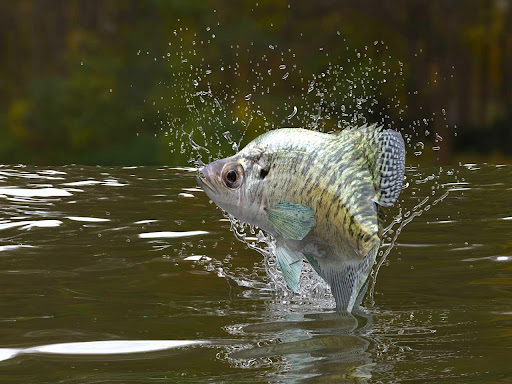All anglers who have fished in North America know that bass and crappies are the most common freshwater sports fish species. Unfortunately, some anglers don’t know the difference between crappies and bass fish.
And that is because they have many similarities, so after thorough research, we compiled this article on Crappie Vs. Bass: the differences.
Bass and crappies have numerous similarities; they inhabit the same places and have the same shape and feeding habits. The main difference is that the crappies have a more petite body than most bass species.
Crappies and bass are some of the best angling fish species targeted by most anglers. Therefore, in this article, we’ll show you the difference between the crappies and some of the most common bass fish and their habitats. We’ll also show you the difference between bass and crappie species.
Crappie Vs. Bass
There is nothing more relaxing for anglers than hunting a specific trophy fish with pals the whole day. And with the different species of bass and crappies being quite popular in the recreational fishing industry, it’s always a great idea to know the difference between these two fish.
In fact, with the correct information, you will know exactly where to find them and even track them easily using your fish finders.
Bass

Bass refers to a wide range of fish, with a vast percentage belonging to three families from the order Perciformes. These families include:
- Serranidae-which includes over 400 species of groupers and sea bass
- Moronidae- contains six fish species like European and striped basses
- Centrarchidae (sunfish) – includes small and largemouth basses that are loved by anglers in North America.
Bass also includes many other species like the Australian bass, butterfly peacock bass, giant sea bass, black sea bass, and temperate sea basses.
Numerous bass species exist in North America, but the most popular game fishes are spotted smallmouth and largemouth basses. Anglers love luring these species using live bait or lure that resemble mice, frogs, crayfish, worms, and baitfish.
Crappies

Crappies refer to the deep-bodied fish belonging to the genus Pomoxis. The term Pomoxis refers to the fish’s spiny gill covers. Crappies are native to the eastern parts of the U.S., but they have been introduced in other parts of the world because they are popular among sport anglers.
This genus is made up of two species (black and white crappies). The black crappies can be found in Canada and the eastern parts of the United States. The white crappies can be found in the Mississippi River basin, Hudson Bay, and the Great Lakes.
The Difference Between Crappies and Bass
The term bass includes numerous marine and freshwater species that vary in size. Therefore in this article, we will focus more on the largemouth, the anglers’ favorite. Both crappies and bass fish are some of the most sought-after fish species by anglers.
These species are vigorous and known for their excitement for the fight. And the fact that they resist being hauled to the shore or into the boat is the main reason why anglers love them. But the smallmouth bass is more vigorous than most basses, including the largemouth bass.
Since they have a similar diet, anglers use the same baits or lures to catch both fish. Some of the most common lures used to capture these fish include some unique lures resembling crayfish and worms, while some anglers prefer live bait.
Climates
Crappie and bass can survive a wide range of climatic conditions, but some bass like the largemouth bass are sluggish in winter and hot summers, while crappies are active in winter. The most common bait used to capture largemouth bass in winter and summer is the golden shiners.
The largemouth bass can live in a wide range of waters and climates but prefer slow-moving waters. A huge percentage of these fish hang around huge patches of weeds, among other covers. And that is because bass and crappies have the same eating habit.
These fish consume aquatic insects, crayfish, and smaller fish. Some of the main differences between crappies and bass include:
Body Size
The main difference between these two fish is their average size, with the largemouth being the biggest of all bass. The largemouth bass can attain a maximum length of about 29.5 inches, while the crappies are between 4 and 6 inches long. The maximum published size of black crappie is 19.3 inches.
Being the biggest bass, the maximum recorded weight of largemouth bass is more than 25 pounds. On the other hand, the weight of the white crappies is about 2 pounds. With a maximum weight of about 5 pounds, the black crappies are bigger than the white ones.
Sexual Dimorphism
Sexual dimorphism is apparent with most bass species, including the largemouth bass. The male largemouth bass is smaller than their female counterparts. Sexual dimorphism is not found in crappies, with the size difference between females and males being almost non-existent.
Description
Other than the body size, the other apparent difference between these fish is their body shape. The maxilla of largemouths stretches beyond the rear margin of their orbit. Like the largemouth bass, the Crappies have a massive mouth with thin lips extending to the lower parts of their eyes.
Sexual Maturity
Largemouth bass reaches sexual maturity and start spawning faster than the crappies. The bass reaches sexual maturity when they are one year old, while the crappies mature at 2 to 3 years. When mature, the male crappies and bass build a nest and then look for a female to mate with.
Black crappies prefer building their nests in protected regions, while white crappies build their nests near the shorelines. Bass build their nests on gravel, muck, or sandy bottom, but they can also use a weedy or rocky bottom and cover it with twigs or roots.
Is Crappie a Top or Bottom Fish?
Crappies are bottom fish that have similar feeding habits as other bottom feeders. Their special diet is the leading reason why most people mistake them for bottom feeders. Therefore when crappie fishing, you should always aim to present your bait or lure within less than 10 feet of the lake’s bottom for more action.
When fishing in shallow water with a depth of about 25 feet, you should aim for less than an inch of the lake’s base of the lake. For lakes deeper than 25 feet, you should present your bait close to 19 feet off the lake’s bottom.
FAQs
Is Bass Related to Crappies?
Bass encompasses several fish species from different families. But some basses like the rock bass, smallmouth bass, largemouth basses, and crappies are related. These bass and white and black crappies belong to Centrarchidae, the Sunfish family.
Can Bass Change Their Gender?
Some bass species, like the black sea bass are called protogynous hermaphrodites. It means they can start their lives as females and then switch to males later in life for survival. This characteristic is not found in crappies.
Are Crappies Bad for a Bass Pond?
Yes, when crappies are introduced in a bass pond, they tend to consume all the food meant for the bass. It can result in the bass becoming thinner and growing slowly. Therefore, if you have a bass pond, do not stock it with crappies.
Fishing Guide: 21 Best Bass Fishing Lakes in Florida
Conclusion – Crappie vs Bass
Despite the numerous similarities between bass and crappies, they are two different species with unique characteristics.
They are strong fish, with some basses attaining a maximum weight of about 25 pounds. And the fact that they’re aggressive and give a good fight when hooked is why anglers love them.


Cory Haasnoot
Cory is a content writer-editor and founder of Tackle Box Talk. Favorite Quote: "Give a man a fish, and you feed him for a day. Teach a man to fish, and you feed him for a lifetime."